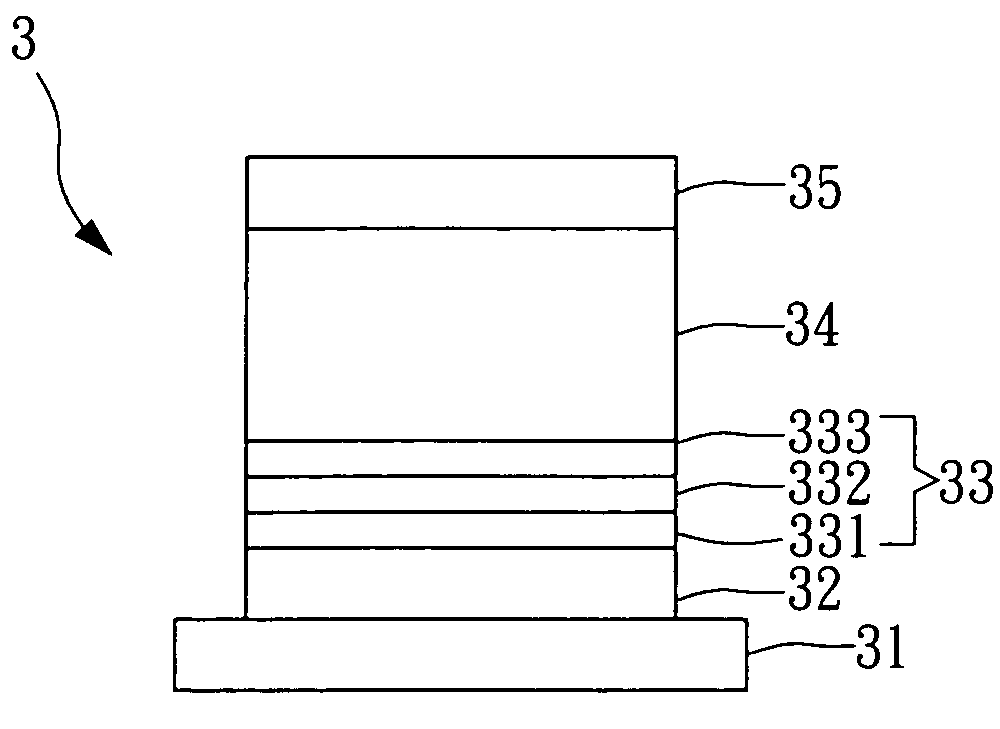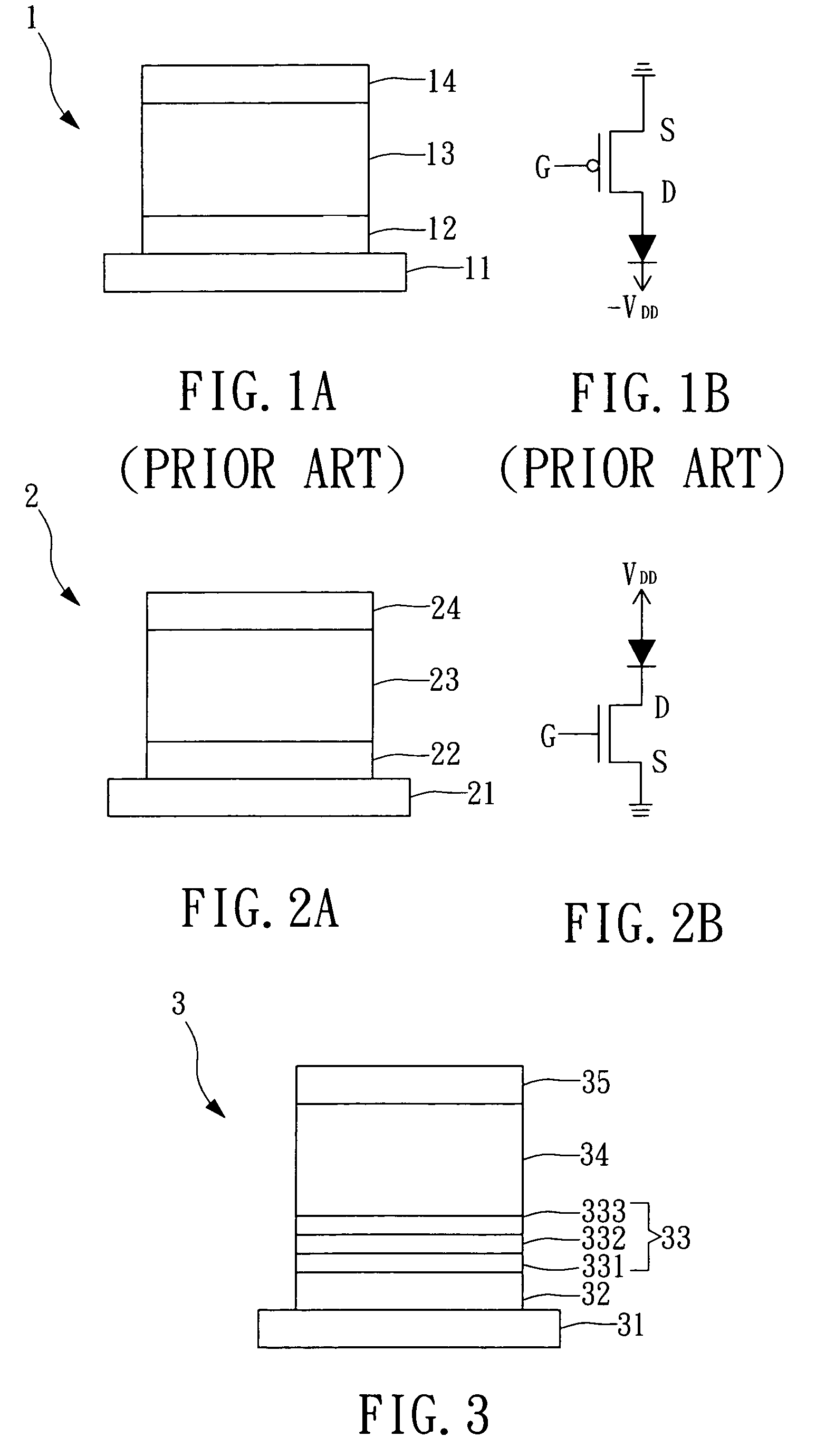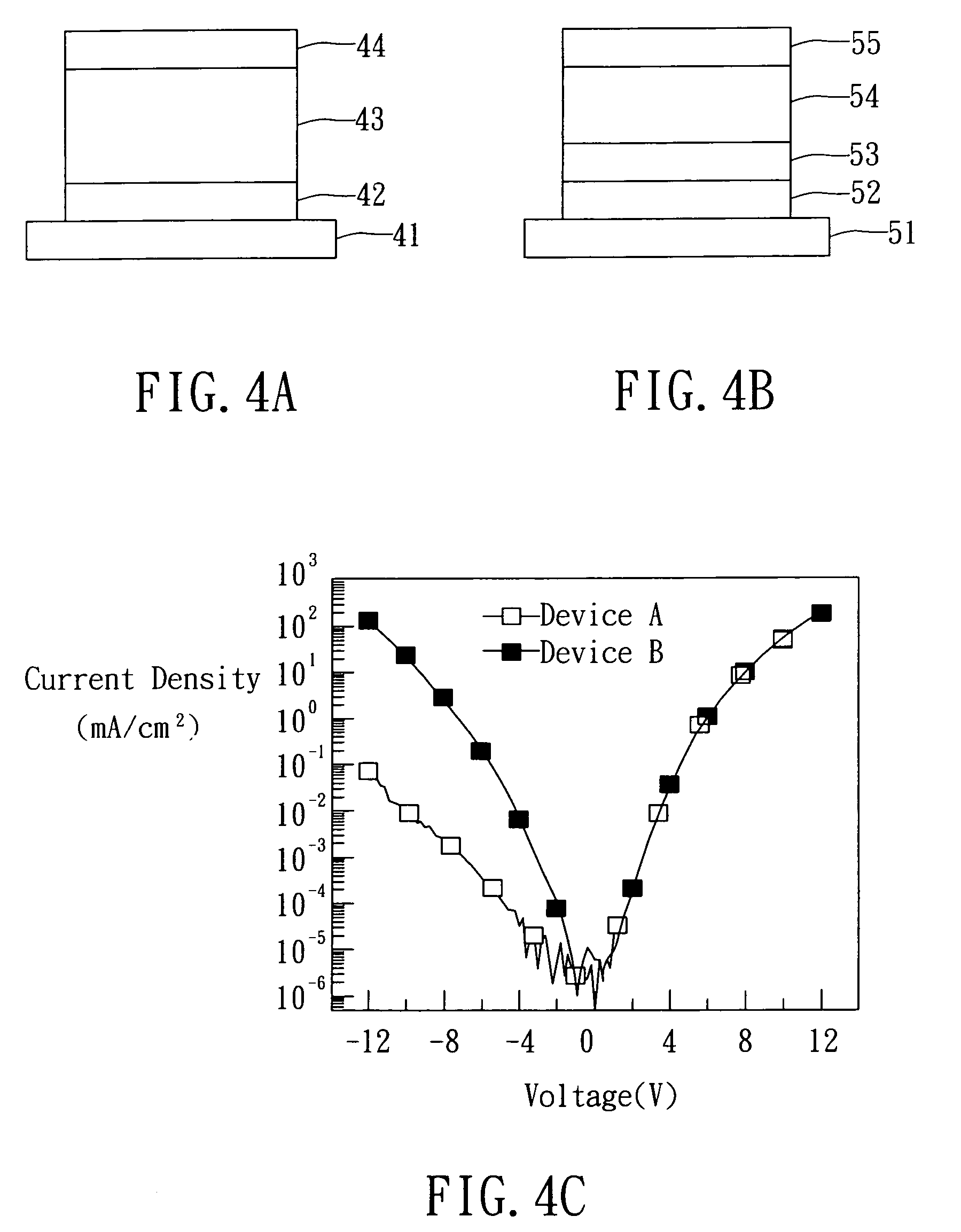Cathode structure for inverted organic light emitting devices
a technology of organic light emitting devices and cathode structures, which is applied in the direction of discharge tubes/lamp details, discharge tubes luminescnet screens, electric discharge lamps, etc., can solve the problems of affecting the capability of electron injection on the interface of metal/organic, too high operating voltage to be applied in real display devices, and increase process control difficulty, etc., to achieve high activity, increase the capability of electron injection of inverted oled, and low work function
- Summary
- Abstract
- Description
- Claims
- Application Information
AI Technical Summary
Benefits of technology
Problems solved by technology
Method used
Image
Examples
embodiment 1
[0038]To illustrate that the electron injection layer of the present invention is capable of improving the electron injection capability of the inverted OLED having the cathode made of Ag, we use the bicathode electron / single carrier device for the comparison.
[0039]Please refer to FIG. 4A, Device A of the present embodiment comprises a substrate 41 made of glass, a bottom cathode layer 42 made of Ag with 80 nm in thickness, an organic electron transporting layer 43 made of Alq3 with 80 nm in thickness, and a top cathode layer 44 made of a stacked structure of LiF / Al with 0.5 nm and 100 nm in thickness respectively.
[0040]Please refer to FIG. 4B, Device B comprises a substrate 51 made of glass, a bottom cathode layer 52 made of Ag with 80 nm in thickness, an electron injection layer 53 made of Alq3 / LiF / Al with 0.2 nm, 0.2 nm and 0.3 nm in thickness respectively, an organic electron transporting layer 54 made of Alq3 with 80 nm in thickness, and a top cathode layer 55 made of LiF / Al wi...
embodiment 2
[0043]To illustrate that the electron injection layer of the present invention is capable of improving the electron injection capability of the inverted OLED having the cathode made of Al, we use the bicathode electron / single carrier device for the comparison.
[0044]Please refer to FIG. 5A, Device C of the present embodiment comprises a substrate 61 made of glass, a bottom cathode layer 62 made of Al with 80 nm in thickness, an organic electron transporting layer 63 made of Alq3 with 80 nm in thickness, and a top cathode layer 64 made of LiF / Al with 0.5 nm and 100 nm in thickness respectively.
[0045]Please refer to FIG. 5B, Device D comprises a substrate 71 made of glass, a bottom cathode layer 72 made of Al with 80 nm in thickness, an electron injection layer 73 made of Alq3 / LiF / Al with 0.2 nm, 0.2 nm and 0.3 nm in thickness respectively, an organic electron transporting layer 74 made of Alq3 with 80 nm in thickness, and a top cathode layer 75 made of LiF / Al with 0.5 nm and 100 nm in...
embodiment 3
[0048]To illustrate the influence of adding an electron injection layer according to the present invention on the electron injection capability of the inverted OLED having the cathode made of Ag, we use the devices described hereinafter for the comparison.
[0049]In this embodiment, the structure of Device E can refer to FIG. 2A, wherein the substrate 21 is a glass substrate, the cathode layer 22 is made of Ag with 80 nm in thickness, the organic structure layer 23 is a stacked structure consisting of a layer of Alq3 with 50 nm in thickness, a layer of α-NPD with 40 nm in thickness, and a layer of a mixture of F4-TCNQ and 2 wt. % m-MTDATA with 20 nm in thickness. Moreover, the anode layer 24 is made of Ag with 20 nm in thickness, on which a refractive index matched layer made of TeO2 with 30 nm in thickness is formed.
[0050]The structure of Device F can refer to FIG. 3, wherein the substrate 31 is a glass substrate, the cathode layer 32 is made of Ag with 80 nm in thickness, the electr...
PUM
 Login to View More
Login to View More Abstract
Description
Claims
Application Information
 Login to View More
Login to View More - R&D
- Intellectual Property
- Life Sciences
- Materials
- Tech Scout
- Unparalleled Data Quality
- Higher Quality Content
- 60% Fewer Hallucinations
Browse by: Latest US Patents, China's latest patents, Technical Efficacy Thesaurus, Application Domain, Technology Topic, Popular Technical Reports.
© 2025 PatSnap. All rights reserved.Legal|Privacy policy|Modern Slavery Act Transparency Statement|Sitemap|About US| Contact US: help@patsnap.com



